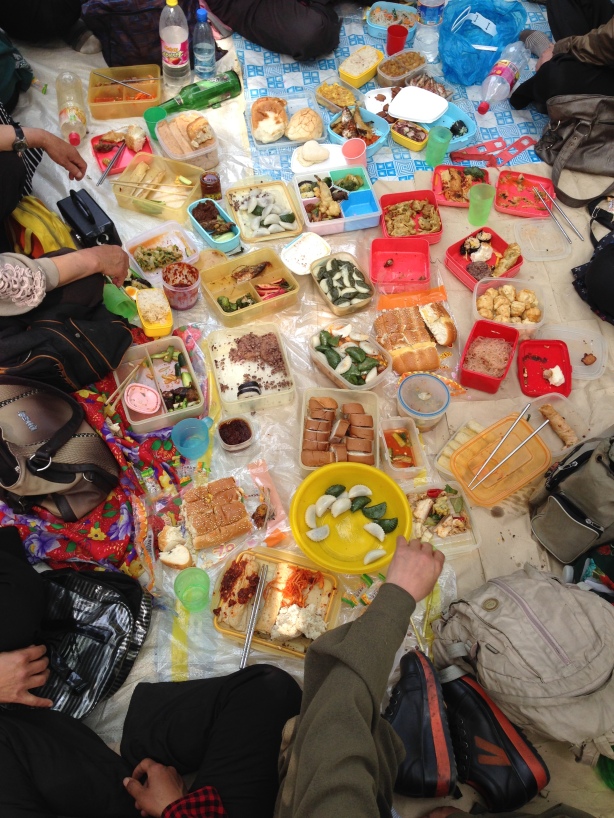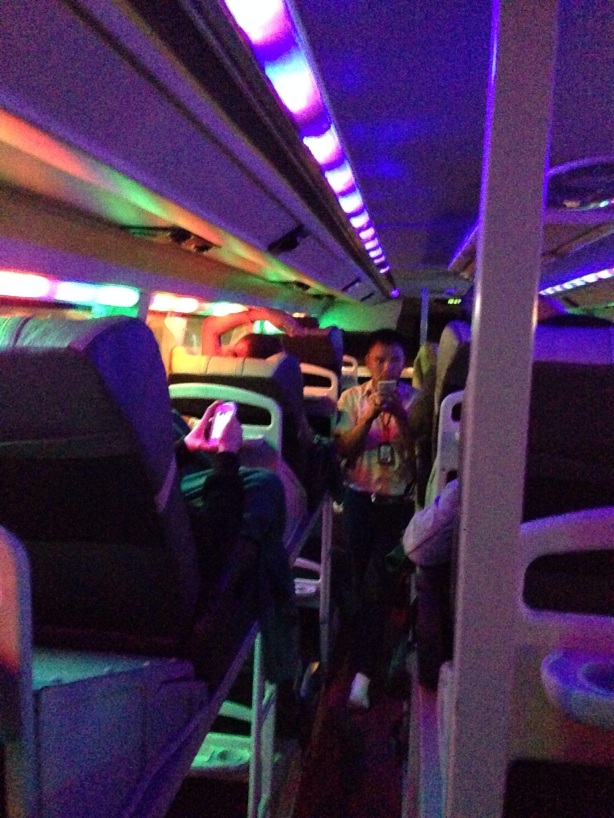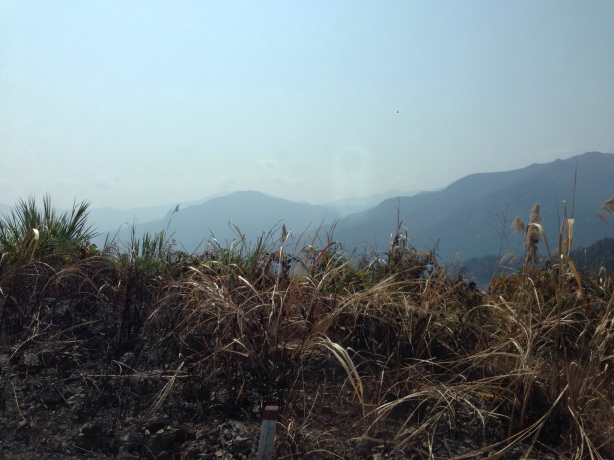We say that slavery has vanished from European civilization, but this is not true. Slavery still exists, but now it applies only to women and its name is prostitution. – VICTOR HUGO, Les Misérables
Background:
Our concept of prostitution is what we get of the media, the westernised version of why and how prostitution came about. It is wrong to think that prostitution in Southeast Asia is similar, like how MacDonald’s tastes the same all around the world (that’s a debate for another time). The views of many reports and stories illustrate that prostitution is different and does evolve. The situation in a first world country is always different from other parts of the world, and the same can be said about prostitution. At the bottom of the group is the South Asian where it is in its primitive stage. In Southeast Asia, it has evolved somewhat and this is the focus of the article. Particularly in Singapore, we are considered a first tier country (similar to Japan) where women are usually imported and not exported. It is quite like the apex of the food chain, where women flows in freely and we get to choose. Naturally, the understanding of this culture and how I can make an impact inevitably made me write this.
Unlike the western counterpart, the Southeast Asia’s sex industry is less reported and documented. Part of it is due to the standard of education, and the other significant part the Asian culture of being less outspoken. Throw in the stigma of prostitution and poverty and it creates a perfect storm for fuzzy information in this part of the world. Books are written and statistics are done, but none are as comprehensive and no one solution is able to combat the issue at hand. Studying this issue has been a tedious journey of reading different sources to get a clearer picture of the matter at hand.
My Story:
During my short-lived trip in Southeast Asia, I had the honour of staying in the red-light district of almost every city. Chulia street, Silom (aka Patpong) and District 1 are the sites of where my hostels are located. The cheap lodging undeniably had to do with the location of the red-light district. In one of my stays, I had a conversation with the staff at the hostel who is a transsexual. We were treading on lighter topics when suddenly his history popped up. He was born in a poor family and was simply feminine. To earn money for the family, he started prostituting himself. Slowly, he came to realise that white men were willing to pay more for sex with a transsexual (probably cause it is more exotic). He went to have his operation in a bid to earn even more and fulfil the desires of these white men. Sick. Bastards. And that would be an understatement.
In Thailand, I stayed in a hostel where sex tourism is banned and were strictly not allowed to bring any Thai men/women into our hostel. Lining the streets of Silom, this hostel was the street parallel to the famed Patpong area. A quick chat with the owner of the hostel allowed me to understand the suffering that these women faced. Many were not even from Thailand but were sent here against their will to earn a living for their pimps. They on the other hand, make a meagre amount for survival. The miserable income that they get makes it impossible for them to get out of the vicious cycle.
Classification:
There are 4 main types of prostitutes: willing, lured by monetary pressure, forced by lack of opportunities/options and trafficking/forced/unwilling. There are various degrees of selling the body; from paying to have a drink with the lady to the extreme end of sex. The term prostitution in this sense relates only to one end of the spectrum where it leads to sex.
Scenario 1: The willing. The group of women that are willing to do the deed for money. Primarily women who are of a certain age and would only charge a premium (read: escorts etc.)

Scenario 2: Lured by Monetary Pressure. The group of women who are willing to sell themselves for a better standard of living. This group of women has the basic needs and education, and are not usually associated with poverty nor lacking basic needs. Students and young working adults usually fall into this category. Some might even sell their bodies at a young age to fetch a premium and hence, the group of Virgins at the end of the spectrum.

Scenario 3: Forced by lack of opportunities / options. This group covers a wide range of women, from the young to the old. One common characteristic is the lack of education and options to do other forms of work. Their limited skillsets leaves them with little choice but to sell themselves to sustain a living. Women in this group are usually poorer and should be one of the focus of this article. Women who are transported to a first tier country like Singapore are usually in this group. They lack the qualifications and education to get out of this cycle. Alarmingly, some families even sell their daughters at a young age because they fetch a premium.

Scenario 4: The trafficked, forced and unwilling. Due to strict laws, we are unlikely to see such women in Singapore. However, the extent of trafficking and keeping women under a tight leash is rampant in our neighbouring countries. Women rarely see the light of day and their only form of socialising is with the men they meet to sell their services to. Some are even kept on drugs and the reliance of it makes fleeing difficult. This group varies from young and underaged girls being sold to brothels for a premium to the older women who are kept in this cycle and are unable to leave.

Solution:
Undoubtedly, there are plans to help these women on a daily basis. Millions have been spent to support and improve the situation in which women unavoidably land into prostitution. However other than education, most are temporary solutions and unsustainable. The debate between tactical and strategic solutions arises. Take this for example: targeting men who buys sex using undercover officers. A new form of resolution has to take place and it should all begin with the cause of it: Men. Implement the concept of a strategic solution and the curves of demand and supply and a cost-free solution is formed. Without demand from men, the supply of prostitutes would dwindle.
An almost perfect scenario of a significant decrease in commercial sex demand would not eliminate all the prostitution in the world as there are always the first two scenarios. However, removing demand to a moderate scale would tip the balance in favour, resulting in higher costs from the drop in supply and having the first two scenarios taking over most of the demand. A huge portion would be gone, especially the part on trafficking.
Focus:
Therefore, it would mainly be the groups that are forced by lack of opportunities/options and trafficking/forced/unwilling that would be the focus of this solution. Besides, the other reason would be the fact that I am not Superman and I cannot save the world. Nor am I Batman. Or Ironman.
Education and the 2 Pronged Approach:
Human trafficking usually stems from poverty and the best tool to combat poverty is education. Education -> reduction in poverty -> reduction in human trafficking. Educating people is a costly business and is a multi-layered issue. Add in a dose of politics, money, a lack of infrastructure/technology, you get a problem only strong willed governments can solve. And we shall leave these issues to them.
The other approach is cost free, less time consuming and can be done everyday. It is the educating the educated that prostitution is wrong and it leads to human trafficking. Now how hard can it be to educate well learned people who knows right from wrong? But do they even know what is right from wrong?
The obvious answer would be to stop visiting prostitution, but how many people can see the correlation between prostitution and human trafficking? How do you expect them to see the far fetched link between prostitution and human trafficking when they are not even able to see the direct relationship between prostitution and the dehumanizing of humans?
The purpose was never to eradicate sex as a whole. It is never to be religiously backed, to stop one night stands and consensual pre-marital sex. The desire for sex is hard to diminish as it is a real physiological need. The context was always to prevent women from selling sex and men to dehumanize them.
The Grey Area:
The main way to combat trafficking is to stop the demand for commercial sex. But what about the various degrees of dehumanizing women? Does the KTV that offers sleazy half services differ much from the brothel that does the full service? Women are still paid for such ‘services’ and with such demand comes with the equivalent supply of women.
The dehumanizing of women comes in many forms, some of which we are closer to than the other. We might not have friends that visits brothels every other day, but most of us knows a handful (or more) that does believe in patronizing such KTVs for a similar experience. Some do not like the experience of going ‘all out’, but want to have a piece of the commercial sex industry. This grey area can be combated too, and could well be the backbone of the solution to human trafficking for sex.
The cost of such grey area services are usually cheaper because of the wider demand (and acceptability in our culture) as compared to the ‘full on’ sex industry. But what if demand for the grey area is drastically reduced? The supply would drop in relation to the demand and full-time prostitutes would be drawn into this grey area, facing the fact that women would rather do something less demeaning if given a chance. And what would happen to the sex industry? The supply would drop as well as more women are drafted into the more socially acceptable form in KTVs.
So what happens to the demand when the supply drops and the price increases? Go figure.
Sustainable Actions:
So how do we stop demand? The same way I made you aware of this. Start a conversation with your friends. Get them to talk about it and make them realize that visiting these women in the sex industry/grey area is wrong. As with all topics on women equality, the statements that carries the most weight are those that are said by men.
Stop hanging out at KTVs (or Lup Sup Bars) with friends. Suggest an alternative place to hang out and drink. Be responsible and do not suggest that business meetings should be held in such places (if it is within your control). Even if it’s clean fun without the paid company of women, avoid patronizing such businesses just because the alcohol is cheaper. When the revenue of such businesses drop, they would have to reinvent their sleazy and pathetic business models for another form of revenue. Think, and treat every women like how you would others to treat your mother or sister.
For the women, make your male buddies aware that this is not right. It is not something in life that is beyond our control. Stop thinking that people are born in different backgrounds and you are lucky enough not to be doing that for a living. Do something about it and start these conversations. And of course, do not turn a blind eye if your man does something like this. It is no longer a socially acceptable thing that men can be out there playing but yet appear ‘faithful’ to their woman.
And why is conversation important? The same way conversation allowed an obese community to lose a million pounds in weight. In that story, a mayor got the city to lose a million pounds because conversations were started in groups and families. Apparently, it works better than incentives given by some other cities. Besides, I do not have money to fund incentives. Conversation is simply cheaper (or free).
The Whitest Shade of Grey -> Thai Clubs:
Now what about clubs where women are the focus but yet not dehumanized in this sense? Yes, they do perform on stage in scandily clad outfits but which movie star doesn’t? The hidden agenda of sex in some form is always present. Money is usually exchanged (for flowers or drinks). Would this be classified as a form of dehumanizing?
These women are on average more talented than you and I. They perform songs and dances for a living, and some might just earn a little more on the side. What impact does it have if the demand for such places cease to exist? To be honest, we will never know. In essence, these are performers and is purely sitting on the fence. So take your pick of which corner to fight for. Or be like me, sit on the fence on this.
How Religion Ties in and is Left Out
Thanks to the diversity of Singapore, we get to interact with people from different religion. All religions in the world promote a better society for everyone, including women. But why do religious people still visit brothels and KTVs? They may be staunch in their religion but are they missing out the part on treating all people equal? Selective religion plays a part, as I do not believe that any religion (read: religion, not cult) actively promotes the sale of women as objects.
To complement that, education is just as necessary to combat these issues. If not, education with the right mindset can at times be sufficient. I have never paid for a woman to touch me in any way sexual, and I have the honour of meeting Atheists who shares the same beliefs as me: that sex should never be bought. It all stems from morals and beliefs, that humans should all be treated equally.
The Future:
We will never know or be able to study the full impact of this course of action. Will the price of trafficking women into the sex industry increase? I certainly hope so. Would this increase in price cause more people to resort to trafficking? Would there be an increase in violence to get women into the sex industry?
Women would be forced to find other alternatives to earn a living. Hopefully, it gets down to something productive and good for mankind. I would rather a woman feed me with her rice than with her flesh. The downside? Unemployment might increase and there would be a bigger scramble for jobs.
At the end of it, it does not matter if there are no scientific research done on the impact of this article. Tens of thousands of women will still be enslaved in this vicious cycle no matter how hard we try. Hundreds of businesses across Southeast Asia would be against this act. But it does not stop us from trying. Even if one woman is saved because of this article, it would still be one more woman than before.
![IMG_3623[1]](https://bucketlistsforbreakfast.wordpress.com/wp-content/uploads/2014/05/img_36231.jpg?w=614&h=460)










![IMG_3301[1]](https://bucketlistsforbreakfast.wordpress.com/wp-content/uploads/2014/04/img_33011.jpg?w=614&h=460)
![IMG_3312[1]](https://bucketlistsforbreakfast.wordpress.com/wp-content/uploads/2014/04/img_33121.jpg?w=614&h=460)
![IMG_3313[1]](https://bucketlistsforbreakfast.wordpress.com/wp-content/uploads/2014/04/img_33131.jpg?w=614&h=138)
![IMG_3317[1]](https://bucketlistsforbreakfast.wordpress.com/wp-content/uploads/2014/04/img_33171.jpg?w=614&h=460)
![IMG_3321[1]](https://bucketlistsforbreakfast.wordpress.com/wp-content/uploads/2014/04/img_33211.jpg?w=614&h=460)
![IMG_3327[1]](https://bucketlistsforbreakfast.wordpress.com/wp-content/uploads/2014/04/img_33271.jpg?w=614&h=140)
![IMG_3328[1]](https://bucketlistsforbreakfast.wordpress.com/wp-content/uploads/2014/04/img_33281.jpg?w=614&h=460)
![IMG_3330[1]](https://bucketlistsforbreakfast.wordpress.com/wp-content/uploads/2014/04/img_33301.jpg?w=614&h=818)
![IMG_3331[1]](https://bucketlistsforbreakfast.wordpress.com/wp-content/uploads/2014/04/img_33311.jpg?w=614&h=818)
![IMG_3333[1]](https://bucketlistsforbreakfast.wordpress.com/wp-content/uploads/2014/04/img_33331.jpg?w=614&h=818)
![IMG_3334[1]](https://bucketlistsforbreakfast.wordpress.com/wp-content/uploads/2014/04/img_33341.jpg?w=614&h=460)
![IMG_3335[1]](https://bucketlistsforbreakfast.wordpress.com/wp-content/uploads/2014/04/img_33351.jpg?w=614&h=818)
![IMG_3339[1]](https://bucketlistsforbreakfast.wordpress.com/wp-content/uploads/2014/04/img_33391.jpg?w=614&h=818)
![IMG_3343[1]](https://bucketlistsforbreakfast.wordpress.com/wp-content/uploads/2014/04/img_33431.jpg?w=614&h=305)
![IMG_3365[1]](https://bucketlistsforbreakfast.wordpress.com/wp-content/uploads/2014/04/img_33651.jpg?w=614&h=460)
![IMG_3352[1]](https://bucketlistsforbreakfast.wordpress.com/wp-content/uploads/2014/04/img_33521.jpg?w=614&h=818)
![IMG_3351[1]](https://bucketlistsforbreakfast.wordpress.com/wp-content/uploads/2014/04/img_33511.jpg?w=614&h=818)
![IMG_3350[1]](https://bucketlistsforbreakfast.wordpress.com/wp-content/uploads/2014/04/img_33501.jpg?w=614&h=460)
![IMG_3355[1]](https://bucketlistsforbreakfast.wordpress.com/wp-content/uploads/2014/04/img_33551.jpg?w=614&h=818)
![IMG_3353[1]](https://bucketlistsforbreakfast.wordpress.com/wp-content/uploads/2014/04/img_33531.jpg?w=614&h=818)
![IMG_3357[1]](https://bucketlistsforbreakfast.wordpress.com/wp-content/uploads/2014/04/img_33571.jpg?w=614&h=818)
![IMG_3369[1]](https://bucketlistsforbreakfast.wordpress.com/wp-content/uploads/2014/04/img_33691.jpg?w=614&h=818)
![IMG_3372[1]](https://bucketlistsforbreakfast.wordpress.com/wp-content/uploads/2014/04/img_33721.jpg?w=614&h=460)
![IMG_3382[1]](https://bucketlistsforbreakfast.wordpress.com/wp-content/uploads/2014/04/img_33821.jpg?w=614&h=460)
![IMG_3346[1]](https://bucketlistsforbreakfast.wordpress.com/wp-content/uploads/2014/04/img_33461.jpg?w=614&h=460)
![IMG_3173[1]](https://bucketlistsforbreakfast.wordpress.com/wp-content/uploads/2014/03/img_31731.jpg?w=614&h=460)
![IMG_3175[1]](https://bucketlistsforbreakfast.wordpress.com/wp-content/uploads/2014/03/img_31751.jpg?w=614&h=460)
![IMG_3182[1]](https://bucketlistsforbreakfast.wordpress.com/wp-content/uploads/2014/03/img_31821.jpg?w=614&h=460)
![IMG_3187[1]](https://bucketlistsforbreakfast.wordpress.com/wp-content/uploads/2014/03/img_31871.jpg?w=614&h=460)
![IMG_3191[1]](https://bucketlistsforbreakfast.wordpress.com/wp-content/uploads/2014/03/img_31911.jpg?w=614&h=460)
![IMG_3217[1]](https://bucketlistsforbreakfast.wordpress.com/wp-content/uploads/2014/03/img_32171.jpg?w=614&h=818)
![IMG_3128[1]](https://bucketlistsforbreakfast.wordpress.com/wp-content/uploads/2014/03/img_31281.jpg?w=614&h=818)
![IMG_3129[1]](https://bucketlistsforbreakfast.wordpress.com/wp-content/uploads/2014/03/img_31291.jpg?w=614&h=460)
![IMG_3130[1]](https://bucketlistsforbreakfast.wordpress.com/wp-content/uploads/2014/03/img_31301.jpg?w=614&h=460)
![IMG_3131[1]](https://bucketlistsforbreakfast.wordpress.com/wp-content/uploads/2014/03/img_31311.jpg?w=614&h=818)
![IMG_3132[1]](https://bucketlistsforbreakfast.wordpress.com/wp-content/uploads/2014/03/img_31321.jpg?w=614&h=818)
![IMG_3136[1]](https://bucketlistsforbreakfast.wordpress.com/wp-content/uploads/2014/03/img_31361.jpg?w=614&h=460)
![IMG_3137[1]](https://bucketlistsforbreakfast.wordpress.com/wp-content/uploads/2014/03/img_31371.jpg?w=614&h=460)
![IMG_3148[1]](https://bucketlistsforbreakfast.wordpress.com/wp-content/uploads/2014/03/img_31481.jpg?w=614&h=460)
![IMG_3105[1]](https://bucketlistsforbreakfast.wordpress.com/wp-content/uploads/2014/03/img_31051.jpg?w=614&h=460)
![IMG_3106[1]](https://bucketlistsforbreakfast.wordpress.com/wp-content/uploads/2014/03/img_31061.jpg?w=614&h=818)
![IMG_3107[1]](https://bucketlistsforbreakfast.wordpress.com/wp-content/uploads/2014/03/img_31071.jpg?w=614&h=818)
![IMG_3108[1]](https://bucketlistsforbreakfast.wordpress.com/wp-content/uploads/2014/03/img_31081.jpg?w=614&h=460)
![IMG_3126[1]](https://bucketlistsforbreakfast.wordpress.com/wp-content/uploads/2014/03/img_31261.jpg?w=614&h=460)
![IMG_3112[1]](https://bucketlistsforbreakfast.wordpress.com/wp-content/uploads/2014/03/img_31121.jpg?w=614&h=460)
![IMG_3116[1]](https://bucketlistsforbreakfast.wordpress.com/wp-content/uploads/2014/03/img_31161.jpg?w=614&h=818)
![IMG_3125[1]](https://bucketlistsforbreakfast.wordpress.com/wp-content/uploads/2014/03/img_31251.jpg?w=614&h=460)
![IMG_3085[1]](https://bucketlistsforbreakfast.wordpress.com/wp-content/uploads/2014/03/img_30851.jpg?w=614&h=460)
![IMG_3086[1]](https://bucketlistsforbreakfast.wordpress.com/wp-content/uploads/2014/03/img_30861.jpg?w=614&h=460)
![IMG_3087[1]](https://bucketlistsforbreakfast.wordpress.com/wp-content/uploads/2014/03/img_30871.jpg?w=614&h=460)
![IMG_3089[1]](https://bucketlistsforbreakfast.wordpress.com/wp-content/uploads/2014/03/img_30891.jpg?w=614&h=818)
![IMG_3092[1]](https://bucketlistsforbreakfast.wordpress.com/wp-content/uploads/2014/03/img_30921.jpg?w=614&h=818)
![IMG_3090[1]](https://bucketlistsforbreakfast.wordpress.com/wp-content/uploads/2014/03/img_30901.jpg?w=614&h=818)
![IMG_3091[1]](https://bucketlistsforbreakfast.wordpress.com/wp-content/uploads/2014/03/img_30911.jpg?w=614&h=818)
![IMG_3094[1]](https://bucketlistsforbreakfast.wordpress.com/wp-content/uploads/2014/03/img_30941.jpg?w=614&h=460)
![IMG_3104[1]](https://bucketlistsforbreakfast.wordpress.com/wp-content/uploads/2014/03/img_31041.jpg?w=614&h=460)





























